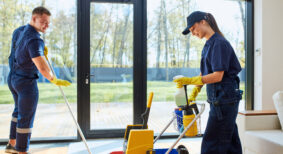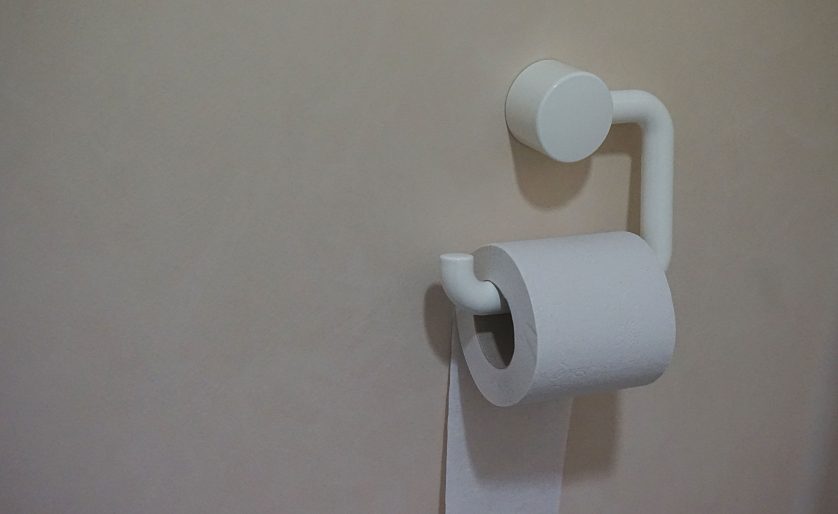In order to attract tenants and customers to commercial spaces, property managers relied heavily on the offer of diversified retail and food fairs. Today, it is the cleanliness of public restrooms that will convince people that it is safe to return to public spaces.
A recent British study reveals that more than half of the respondents (51%), are convinced that they can contract coronavirus in public restrooms. This is the main reason that discourages people from returning to public places, restaurants, and pubs. Furthermore, despite repeated and insistent worldwide recommendations on the importance of handwashing to help stop the spread of the coronavirus, this same study tells us that more than one in 10 adults (12%) still do not wash their hands after using the restroom! This is a disturbing statistic that undoubtedly worries 86% of the population, who admit that they are much more demanding than before when it comes to the cleanliness of public restrooms.
For many people, the need to use public restrooms causes anxiety. Although there are multiple intelligent solutions and dispensers on the market, their sole installation is not enough to manage restroom maintenance and cleanliness. Users have their share of responsibility insofar as appropriate arrangements are made to encourage and support hand washing behaviour.
In Japan, the recent appearance of ultra-modern, minimalist, glass-walled public restrooms heralds the potential of the restroom of the future. The transparency of the facilities makes people feel safe because it allows them to see how clean the facility is before entering and prevents malicious people from hiding in them. As soon as the door is locked, the glass becomes opaque, ensuring the occupant’s privacy. In our North American reality, it is unlikely that we will ever see this type of restroom installed in our parks. To make the population feel secure, transparency must therefore be demonstrated through cleaning operations.
The transparency of your cleaning operations
It is important to let your occupants know that you have taken further steps to improve the sanitation of your facilities, especially public restrooms. The status quo is not reassuring! By demonstrating that your facility is committed to hygiene, you encourage users to do their part and remain vigilant.
State your new restroom policy. A checklist, recording the tasks performed, the time of day and the operator’s initials, also helps reassure the most concerned. Even more reassuring is to meet an employee who is involved in restroom maintenance and cleaning during busy hours.
Use posters to remind them of the basic rules, i.e. hand washing, social distancing and face covering. Make sure to keep dispensers clean and functional at all time.
Social distancing
Restrooms do not always allow for social distancing. By keeping your dispensers full you promote good circulation by preventing people from standing in line to wash or wipe their hands, which can sometimes discourage people who are too rushed to stop. Non-contact dispensers are recommended to reduce the risk of cross-contamination. Hand paper towels also dry hands faster and better than hand dryers. Hygiene equipment manufacturers anticipate a craze for hand paper because many people (61%) also use it to avoid touching contact points (faucets, door, handle, etc.).
If possible, designate one direction of circulation in your restroom, one door to enter, another to leave. A space to clean your hands, another space to dry them.
Also install a disinfectant dispenser at the restroom exit. This provides a final opportunity for the user who was unable to wash his or her hands indoors (because it was too busy, because there was no soap left, because he or she forgot, etc.) to fulfill his or her responsibility and disinfect his or her hands.
Intelligent devices
With advances in technology, it is now possible to check in real time, using your smartphone and a QR code, when the last restroom maintenance was performed. Similarly, certain applications allow you to send a comment in the event of messes that require immediate intervention or simply to evaluate and comment on the cleanliness of the premises. Other products are equipped with a device that can send a signal when the dispensers need to be refilled.
Solutions are also available to make a surface antimicrobial or self-disinfecting. Either by applying adhesive film or by chemically treating the surface. To take the example of restrooms in Japan, a UV light can be integrated into the toilet bowls to allow continuous disinfection.
The pandemic period is a good time for innovation. Until we convince the few reluctant people who do not believe in the importance of hand hygiene, there are certainly effective means that can be suitable for all types of facilities and that can contribute to better restroom hygiene in general.
Overall habits improvement
The same British study, however, highlights encouraging improvements in respondents’ hygiene habits. Those who wash their hands now wash for at least 19 seconds, compared to about 12 seconds previously.
By now, 83 percent of people wash their hands after coughing and 40 percent of respondents have made a habit of washing their hands after using a cell phone or touching a computer keyboard. This is twice as high as before the pandemic!
Gestion HB is a Canadian consulting firm who guides, supports and advises their clients on ways to optimize the operational performance of their organizations in terms of building hygiene and sanitation. For more information, please email doliveira@gestionhb.com, visit https://www.gestionhb.com/ or call 514-316-6723.








